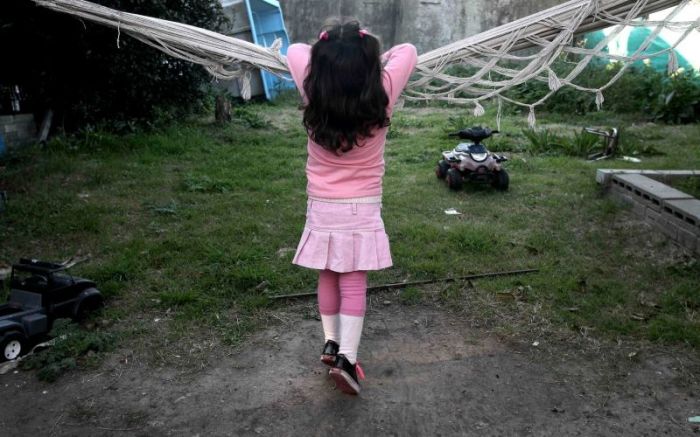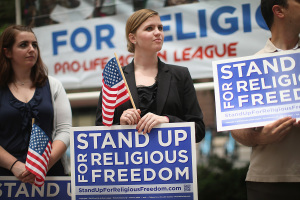American Academy of Pediatrics Guideline Supports Puberty Blockers, Sex Reassignment for Kids

The American Academy of Pediatrics has released a new medical guideline supporting the surgical and hormonal transition of transgender children and adolescents.
The left-leaning pediatricians association released on Monday a new policy statement on "ensuring comprehensive care" for transgender and gender-diverse children.
The statement was derived from the AAP Committee on the Psychosocial Aspects of Child and Family Health, Committee on Adolescence, and Section on Lesbian, Gay, Bisexual and Transgender Health and Wellness.
The policy statement, authored by Dr. Jason Rafferty (member of the AAP Section on Lesbian, Gay, Bisexual and Transgender Health and Wellness), will be published in the October issue of AAP's journal Pediatrics.
The document recommends a number of ways that pediatricians and parents can affirm the gender choice of patients who are struggling with gender dysphoria so that the risk of mental health problems and suicide is lessened through the provision of a welcoming environment and inclusivity.
The new guideline comes after a study released earlier this month found that 51 percent of female-to-male transgender individuals have attempted suicide.
Included in the statement are suggestions that call for primary care doctors to do such things as installing gender-neutral bathrooms in their offices, putting up signs that show their office has a level of LGBT inclusivity and awareness and even recommends instituting "diversity training that encompasses sensitivity when caring for youth who identify as [transgender]" because it can be "helpful for educating clinical and administrative staff."
In addition, the guideline also supports puberty suppression — the use of chemical treatments to block the normal process of puberty in children. Although critics have warned about the permanent effects that puberty blocking treatment can have on a children and adolescents, such as sterilization, the document repeats a claim that puberty suppression treatments are "reversible" and can be "used in adolescents who experience gender dysphoria."
The use of such treatments, the guideline says, provides "time up until 16 years of age for the individual and the family to explore gender identity, access psychosocial supports, develop coping skills, and further define appropriate treatment goals."
"If pubertal suppression treatment is suspended, then endogenous puberty will resume," the document states, ignoring scholars who say that children who take puberty blockers for a prolonged period of time won't develop the characteristics that were blocked for years if they go off puberty blockers later in their teenage years.
"The available data reveal that pubertal suppression in children who identify as [transgender or gender-diverse] generally leads to improved psychological functioning in adolescence and young adulthood," the guideline claims.
The guideline does explain, however, that pubertal suppression is not without risks and admits that "research on long-term risks, particularly in terms of bone metabolism and fertility is currently limited and provides varied results."
Last year, scholars from the Johns Hopkins University and Washington University in St. Louis warned that puberty-blocking treatments for children are "radical" and "experimental" because of the lack of long-term research into the health effects.
Instead of gender transition, the new AAP policy statement calls on doctors to adopt the term "gender affirmation" because "research substantiates that children who are prepubertal and assert an identity of [transgender or gender-diverse] know their gender as clearly and as consistently as their developmentally equivalent peers who identify as cisgender and benefit from the same level of social acceptance."
The approach seemingly calls on doctors to affirm a child's gender identity. However, early research has shown that a majority of children who experience gender-dysphoria as a child tend not to as adults.
"This developmental approach to gender affirmation is in contrast to the outdated approach in which a child's gender-diverse assertions are held as 'possibly true' until an arbitrary age (often after pubertal onset) when they can be considered valid, an approach that authors of the literature have termed 'watchful waiting,'" the guideline says.
"This outdated approach does not serve the child because critical support is withheld. Watchful waiting is based on binary notions of gender in which gender diversity and fluidity is pathologized; in watchful waiting, it is also assumed that notions of gender identity become fixed at a certain age."
The policy statement adds that more "robust and current" research suggests that, "rather than focusing on who a child will become, valuing them for who they are, even at a young age, fosters secure attachment and resilience, not only for the child but also for the whole family."
The AAP document also asserts that "familial acceptance" or rejection of a child's gender identity can have an impact on the children's ability to discuss their gender. AAP states that parents should not suppress concerns because they "can affect mental health."
"Some caution has been expressed that unquestioning acceptance per se may not best serve questioning youth or their families," the guideline states. "Instead, psychological evidence suggests that the most benefit comes when family members and youth are supported and encouraged to engage in reflective perspective taking and validate their own and the other's thoughts and feelings despite divergent views."
The guideline cites a study that focused on 433 people who identify as trans in Ontario, Canada, which found that suicide attempt rates among transgender adolescents with supportive parents was around 4 percent while the rate among transgender adolescent with non-supportive parents was 60 percent.
The new AAP statement lays out nine specific recommendations. Chief among them is that transgender youth have access to "gender-affirming, and developmentally appropriate health care." Another recommendation is that insurance organizations offer plans that are specific to the needs of transgender-identifying youth, whether that be medical, psychological, or "surgical gender-affirming interventions."
The document also calls on pediatricians to have a "role in advocating for policies and laws that protect youth who identify as [transgender]."
The guideline was praised by the Washington, D.C.-based LGBT lobbying firm Human Rights Campaign. HRC joined AAP in 2016 in creating a community guide for caring for transgender youth.
The new AAP guideline contrasts with the policy statement of the American College of Pediatricians, a socially conservative association of doctors.
The ACP urges all doctors, educators and lawmakers to "reject all policies that condition children to accept as normal a life of chemical and surgical impersonation of the opposite sex."
"Puberty is not a disease and puberty-blocking hormones can be dangerous," the 2017 ACP statement reads. "Reversible or not, puberty-blocking hormones induce a state of disease — the absence of puberty — and inhibit growth and fertility in a previously biologically healthy child."
"Pre-pubertal children diagnosed with gender dysphoria may be given puberty blockers as young as 11, and will require cross-sex hormones in later adolescence to continue impersonating the opposite sex," the statement adds. "These children will never be able to conceive any genetically related children even via artificial reproductive technology. In addition, cross-sex hormones (testosterone and estrogen) are associated with dangerous health risks including but not limited to cardiac disease, high blood pressure, blood clots, stroke, diabetes, and cancer."
ACP cites the Diagnostic and Statistical Manual of Mental Disorders, Fifth Edition to state that 98 percent of boys and 88 percent of girls struggling with gender dysphoria "will eventually accept reality and achieve a state of mental and physical health.
"Conditioning children into believing a lifetime of chemical and surgical impersonation of the opposite sex is normal and healthful is child abuse," ACP continued. "Endorsing gender discordance as normal via public education and legal policies will confuse children and parents, leading more children to present to 'gender clinics' where they will be given puberty-blocking drugs. This, in turn, virtually ensures they will 'choose' a lifetime of carcinogenic and otherwise toxic cross-sex hormones, and likely consider unnecessary surgical mutilation of their healthy body parts as young adults."




























